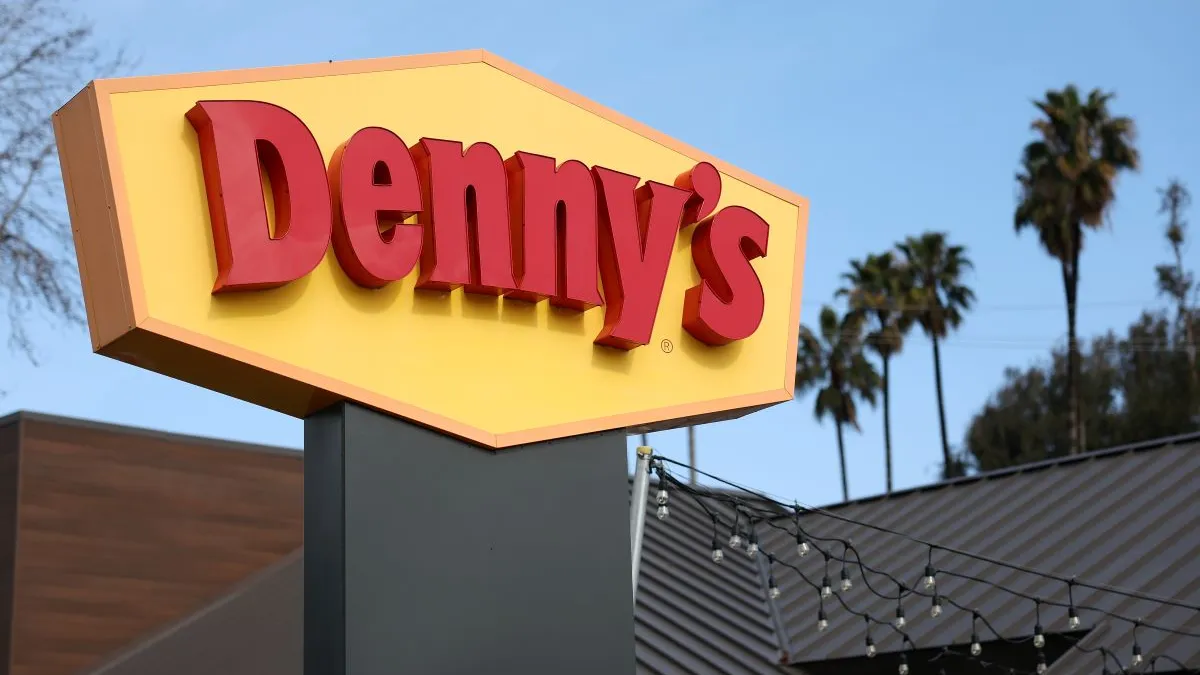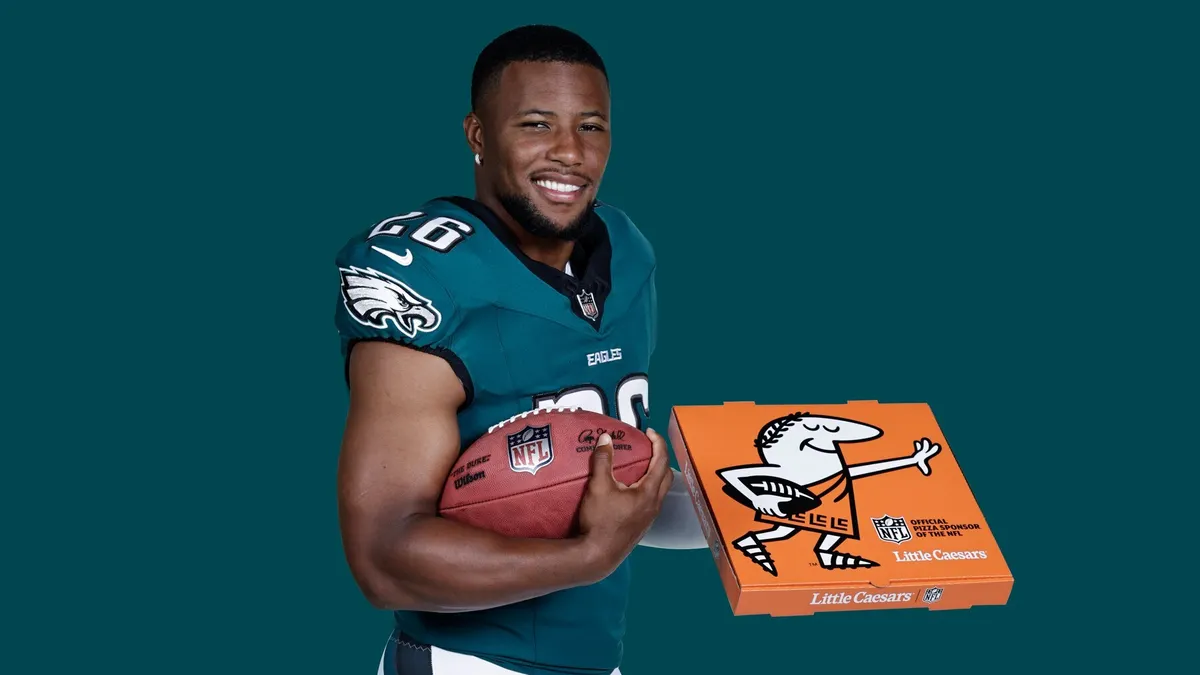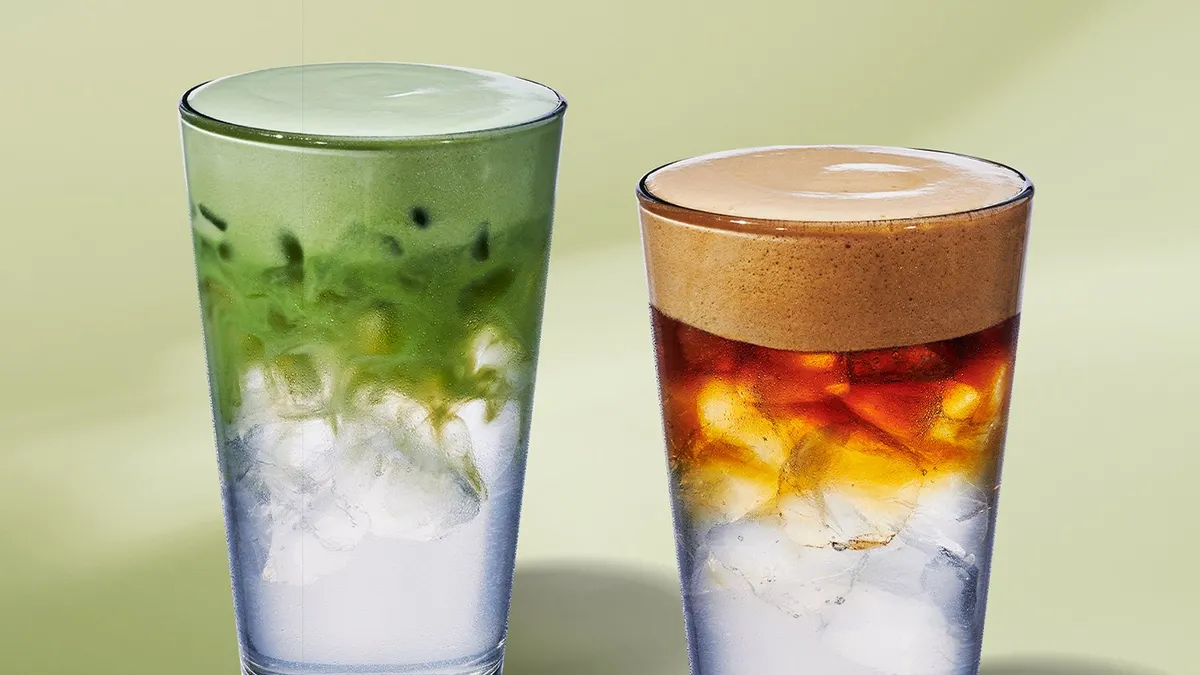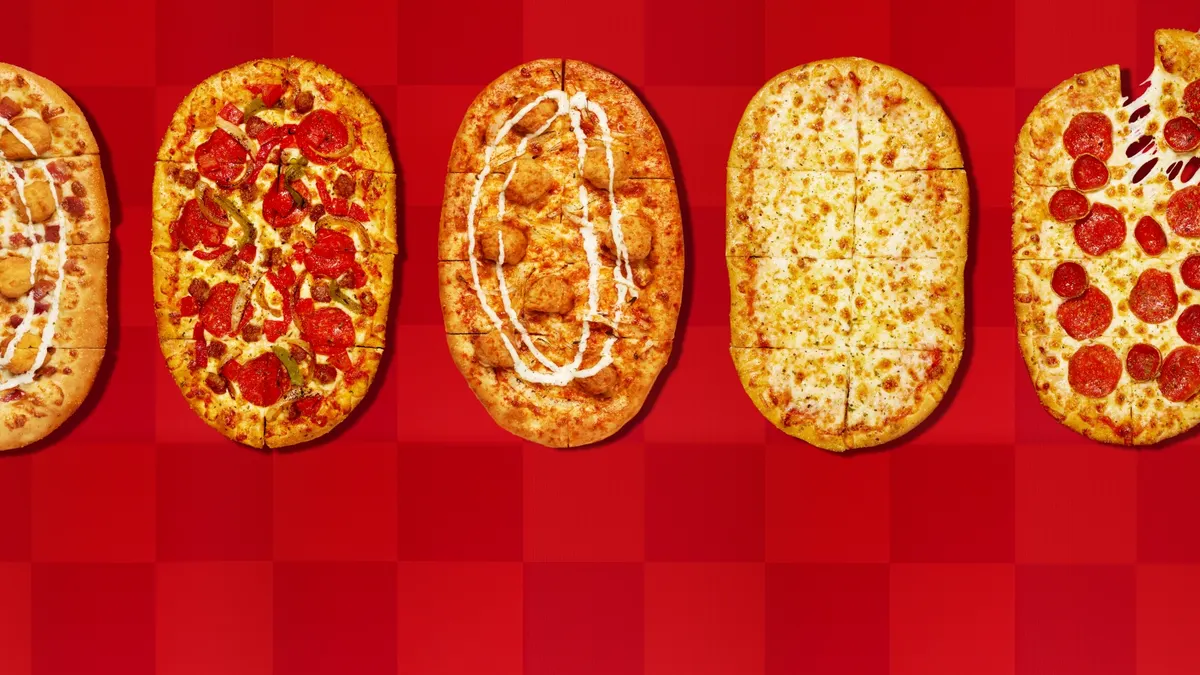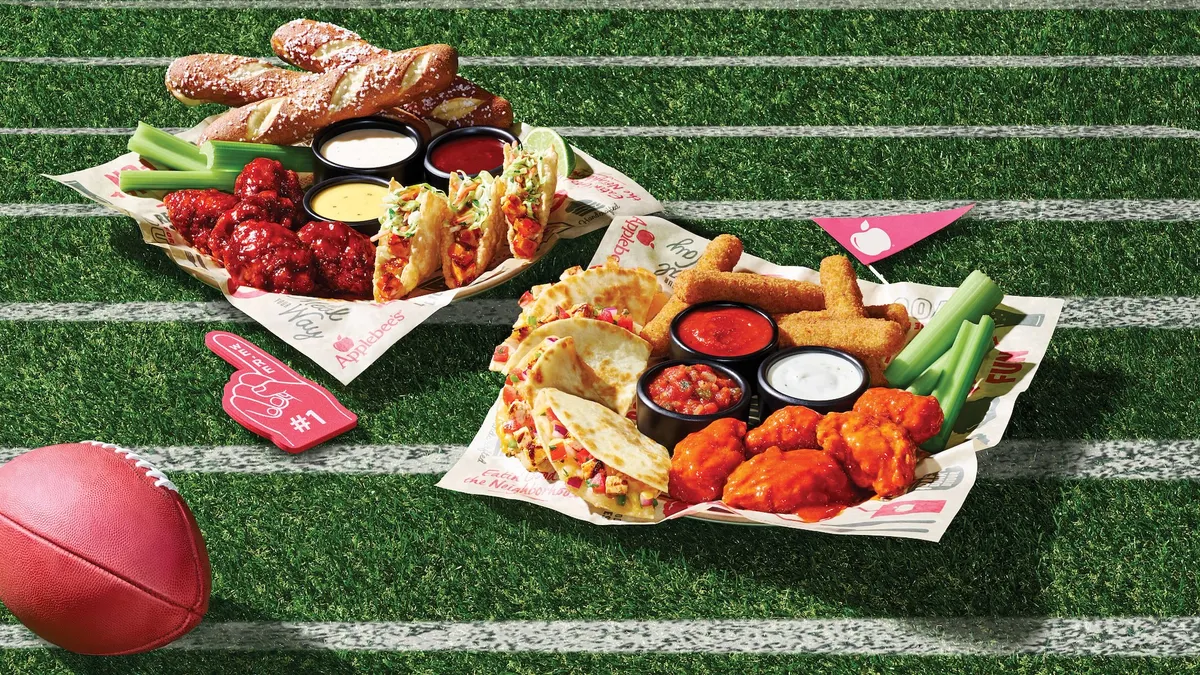Changes are afoot at Yum Brands as the owner of KFC, Taco Bell and Pizza Hut hits the gas on a transformation strategy that has grown more pressing due to needs driven by the coronavirus pandemic.
Last quarter, the company made two acquisitions — the artificial intelligence (AI) unit of performance marketing firm Kvantum and conversational commerce developer Tictuk Technologies — that speak to an eagerness to center more business on e-commerce and data and analytics. Those deals, combined with recent leadership turnover, suggest the restaurant giant could reinvent aspects of its marketing in line with a new digital-first vision. Digital sales across Yum's portfolio reached a record $17 billion in 2020, about a 45% year-on-year increase.
"The key focus point for our teams was the continued acceleration of our digital and technology initiatives across the globe, all geared toward providing customers with new and seamless ways to access our brands," Yum chief executive David Gibbs told investors on a call discussing first-quarter results last month. "In some cases, this means strengthening our ability to grow sales at a faster pace and bringing in strong diverse tech talent."
While executives are clearly excited to integrate Tictuk and Kvantum as part of Yum's multiyear Recipe for Growth blueprint, other areas of business are experiencing volatility. In April, KFC lost U.S. marketing chief Andrea Zahumensky, who helped extend a creative revitalization of the fried chicken chain , and is actively seeking a replacement. Pizza Hut, a frequent laggard at the company prior to COVID-19, saw CMO George Felix depart for Tinder just weeks earlier amid an overhaul of the unit's marketing team. Lindsay Morgan, previously director of brand communications, is now CMO.
It's still too early to gauge the full impact of Yum's recent M&A maneuvers and leadership departures on its marketing. But experts pointed to larger trends in the quick-service category and changing media consumption habits — including the adoption of digital and mobile ordering and acceleration of cord-cutting — that paint a future where companies like Yum could direct more resources to performance marketing versus splashier brand-building ploys. The Kvantum deal, for instance, is intended to help Yum make smarter and more efficient decisions around media planning, fast-tracking a data-driven marketing strategy .
When asked for comment on how the Kvantum and Tictuk acquisitions could impact marketing teams and media spend, a spokesperson directed Marketing Dive to the earnings call transcript.
"All the trends are clearly pivoting toward internet- and smartphone-based media. That's where the money's going and that's what consumers are using," said Robert Kwortnik, associate professor of services marketing at Cornell's SC Johnson College of Business. "The big brand-based, upper-funnel campaigns, it's not like they go away ... but if the shift in digital eyeballs is moving toward the app-based media, then performance marketing makes a heck of a lot more sense."
Transformation taking shape
Prior to the pandemic, Yum made a key hire, bringing over Walmart CIO Clay Johnson as chief digital and technology officer helping to oversee its transformation. And in 2018, Pizza Hut acquired the online ordering software platform QuikOrder. A more concentrated push into tech could be viewed as a long time coming.
"Honestly, I'm surprised it didn't happen a little sooner," Kwortnik said. "Yum has always been pretty on the forefront of consumer insights. They use consumer insights effectively, not just for product development, but also in thinking about how they go to market, especially with their advertising messages."
Domino's, one of Pizza Hut's top rivals, stands as a leader in the category thanks to early bets on internal digital and mobile ordering capabilities. Domino's for years has promoted itself as a tech company that happens to sell pizza , but similar modes of thinking have grown common as restaurants contend with COVID-19 restrictions that have driven up demand for contactless sales channels and store concepts that come with safety protocols baked in.
"Domino's remains the gold standard for digital innovation and experience in the restaurants industry," Chelsea Gross, a director analyst at Gartner, said in emailed comments. "While Yum Brands continues to chase Domino's in regards to digital experience, I would argue that Yum would be more successful in developing both their owned, direct delivery as well as their partner delivery services with the recent acquisitions."
On the data and analytics front, Yum plans to use Kvantum's machine learning and econometric modeling solutions to measure campaign effectiveness across owned, paid and earned media channels. On the Q1 call with investors, Gibbs said Yum is already seeing "material improvements" in marketing spending efficiency and same-store sales in markets testing the solution, including Pizza Hut's U.K. and Taiwan divisions. KFC and Taco Bell started using some of Kvantum's offerings in the U.S. at the end of last year.
Tictuk works on integrations for social media and messaging channels, such as WhatsApp, Facebook Messenger, SMS and email, that allow consumers to interact with brands and take actions like placing an order. Tictuk's platform was previously available at about 900 KFC, Taco Bell and Pizza Hut locations outside of the U.S., but Yum plans to scale the offering globally to seize on climbing interest in mobile and digital.
"Those acquisitions are definitely accelerators ... If they move the needle there, it will likely build confidence to continue to invest and maybe even acquire more skills."

David Novak
Senior partner, Prophet
Neither the Kvantum or Tictuk deal are massive: The companies together account for roughly 40 employees, according to their LinkedIn pages.
"[We're] buying these companies in order to improve our capability and provide services to our franchisees at the lowest possible costs that are really unique proprietary capabilities that we would have. They're not designed to drive a profit for Yum," Chief Financial Officer Chris Turner told analysts. "We think we've really got a great model here when we do these smaller acquisitions, but we can scale them across the world."
Yet, the deals still underpin where Yum is turning its focus as it builds a growth engine beyond the pandemic — one that could include additional M&A, experts suggested.
"Those acquisitions are definitely accelerators," said David Novak, senior partner at brand transformation consultancy Prophet. "It's a pocket of very focused skills that will add value, in the very least, to show where they can go next. If they move the needle there, it will likely build confidence to continue to invest and maybe even acquire more skills."
Striking a balance
While the Kvantum and Tictuk deals may not be the type to break the bank, integration may prove a challenge. McDonald's in 2019 bought the AI firm Dynamic Yield for more than $300 million to support its digital transformation. A Wall Street Journal report from February indicated Dynamic Yield's offerings have frustrated franchisees while failing to realize some bottom-line goals. McDonald's is reportedly mulling selling off parts of the enterprise, the Journal said. That might serve as a cautionary tale for Yum and its marketing teams.
"Friction between traditional marketing teams and new, digital acquisitions is common," Gartner's Gross said. "Digital transformation should support, not contradict, marketing team goals."
Recent CMO departures at Yum are a separate issue, but similarly spell changes for its marketing. Under Zahumensky's tenure, KFC became known for its outlandish creative plays, like an anime dating sim and Lifetime original short film starring brand mascot Colonel Sanders.
"[If] the shift in digital eyeballs is moving toward the app-based media, then performance marketing makes a heck of a lot more sense."

Robert Kwortnick
Associate professor, SC Johnson College of Business
Off-the-wall brand-building activations will remain a part of the playbook, experts said, but their share of the marketing mix could change.
"It could get down to, for a CMO, where their wheelhouse is — if they're more out of the advertising and creative space where that's their expertise versus the tech insights space, which is inarguably a different skill set," Kwortnik said.
Kvantum's specialty in AI at the same time heralds more automation for Yum's marketing as the industry at large moves toward a more programmatic mindset. The company is trying to balance that shift with human-led insights. The Kvantum unit will be paired closely with Collider Lab, a consumer insights and marketing strategy consultancy Yum purchased in 2015.
"You still need traditional consumer insight, whether it's focus-grouped stuff or survey-based," Kwortnik said. "If you can bundle and bring some of that intelligence in-house, I think that's a pretty worthwhile investment for a big brand.
"There is this risk of chasing the shiny new thing ... especially [with] AI," he added.
What's next
Beyond helping to scale up tech infrastructure, Yum's new assets could be applied in a number of other areas over the long term. Loyalty has become a bigger priority for Taco Bell and Pizza Hut, with the former launching a new program last year.
"There aren't that many companies that have that level of scale across a couple of different specialty categories like they do."

David Novak
Senior partner, Prophet
The broader retail category also might serve as an indicator of where Yum is heading. Kroger, the grocer that acquired the majority of data analysis firm DunhumbyUSA in 2015 , has steadily been building out a retail media network to service other advertisers. As the death of the cookie makes first-party data more valuable, other brands, including Walmart and Target, are doubling down on their own bets in digital advertising.
Restaurants wield data in specialized segments like time of day and foot traffic patterns that are valuable to outside brands. It's not out of the question that media networks could be in the cards for a company like Yum, according to Novak, even though restaurants do not currently have as significant a presence in that space.
"They probably could put something together that competes with where Target's going," Novak said. "There aren't that many companies that have that level of scale across a couple of different specialty categories like they do."
Nearer term, differentiating on convenience and speed will be even more critical for the QSR sector with a post-pandemic reopening starting to take shape. The health crisis reset expectations for restaurants, and many consumers — particularly younger cohorts — may hold onto the digital and mobile habits they adopted due to the pandemic. Engaging people on those channels will require a different mindset, including when it comes to marketing.
"They get sticky to an app that they like and become familiar with. If you're not prominently distributing through that delivery app, it's just another channel," Kwortnik said. "That's more of a push [marketing] strategy: Not just getting people to come to the brick-and-mortar stores, but finding a way to push the market through these other channels that, really, QSRs never had to rely on before."









